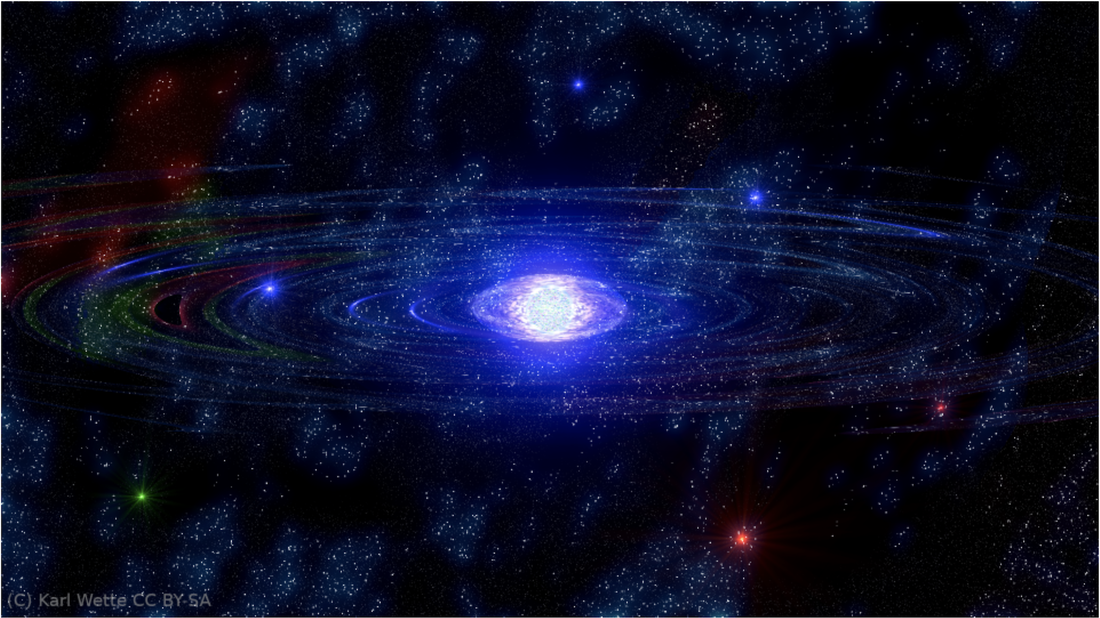May 4 2021
Recall the days before individuals were working from home. Imagine a typical situation—it is Monday morning and individuals are running late to beat the heavy traffic, but they could not locate their car keys. So, what do they do?
 Rapidly rotating neutron stars may be “humming” continuous gravitational waves. Image Credit: K. Wette.
Rapidly rotating neutron stars may be “humming” continuous gravitational waves. Image Credit: K. Wette.
They may try to move from one room to another, glancing at each flat surface, hoping to find the missing keys.
Evidently, this implies that the missing keys are lying somewhere in plain sight; if the keys have fallen behind the sofa, or concealed under a newspaper, individuals would never find them. Or they may convince themselves that they last saw the keys in the kitchen area and look for them there: within each cupboard, the dishwasher, microwave, back of the fridge, and so on.
But if individuals have left the keys on their bedside table, then upending the kitchen would certainly be ineffective. So, which is the most optimal strategy?
A similar challenge is faced by scientists in the quest for gravitational waves—ripples in the fabric of time and space—from quickly rotating neutron stars. Within the Universe, these neutron stars are the densest objects and, if they are not impeccably spherical, would generate a faint “hum” of constant gravitational waves.
Listening to this “hum” would allow investigators to look deep within a neutron star and identify its secrets, gaining a better understanding of the most extreme states of matter. But humans’ highly sensitive “ears”—4-km-sized detectors using strong lasers—have not heard anything to date.
Part of this problem is that, similar to the missing keys, investigators are unsure of the best search approach. A majority of earlier investigations have considered the “room-to-room” strategy, in an attempt to identify constant gravitational waves in as many different locations as possible.
But this implies that individuals can spend only a minimal amount of time listening to the tell-tale “hum” in any one place—in the same manner they spend the time staring at their coffee table, attempting to distinguish a key-shaped object. Since the “hum’ is very quiet, individuals may not even hear this sound.
In a newly published study, a research team headed by Karl Wette, a postdoctoral researcher from the ARC Centre of Excellence for Gravitational Wave Discovery (OzGrav) at the Australian National University, tried the “where else could they be but the kitchen?” strategy.
We took an educated guess at a specific location where continuous gravitational waves might be, based in part on what we already know about pulsars—they’re like neutron stars but send out radio waves instead of continuous gravitational waves. We hypothesised that there would be continuous gravitational waves detected near pulsar radio waves.
Karl Wette, Postdoctoral Researcher, ARC Center of Excellence for Gravitational Wave Discovery, Australian National University
It is similar to guessing that the missing keys are probably near a wallet or handbag.
With the help of existing observational data, the researchers spent a considerable amount of time looking at this site (almost 6000 days of computer time) and carefully listening for that slight “hum.” The team also employed graphic processing units—that is, specialist electronics generally used for computer games—that made their algorithms run extremely fast.
Our search was significantly more sensitive than any previous search for this location. Unfortunately, we didn't hear anything, so our guess was wrong this time. It’s back to the drawing board for now, but we'll keep listening.
Karl Wette, Postdoctoral Researcher, ARC Center of Excellence for Gravitational Wave Discovery, Australian National University
Journal Reference:
Wette, K., et al. (2021) Deep exploration for continuous gravitational waves at 171–172 Hz in LIGO second observing run data. Physical Review D. doi.org/10.1103/PhysRevD.103.083020.